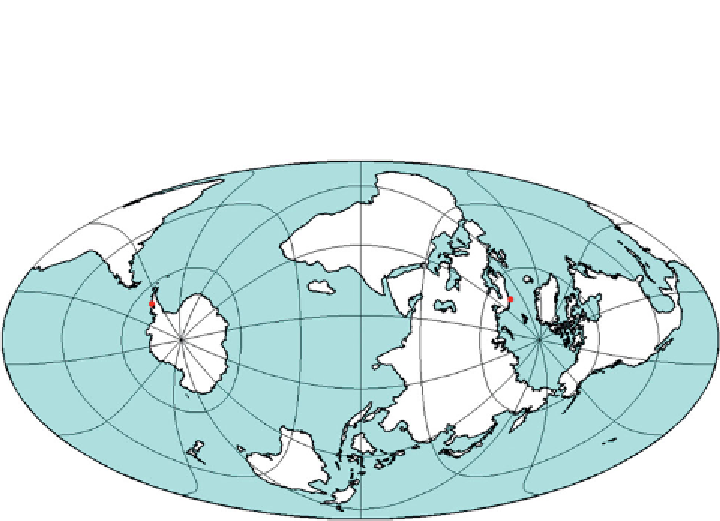Geoscience Reference
In-Depth Information
Figure 11.9
The two polar regions. The Antarctic is land surrounded by ocean whereas the
Arctic is ocean surrounded by land.
consequences are many. There are indigenous peoples in the north but no
permanent residents in Antarctica. There is land on which to deploy experiments in
the south. The atmosphere in the north is much less stable and the troposphere and
stratosphere in the north polar region have frequent incursions of warm mid-
latitude air. Antarctica
s climate system becomes quite isolated for extended times,
especially in winter, and as a result the temperatures fall to the lowest on Earth,
typically 20
C colder in the south than the north. One consequence is that ozone
losses in the north are much smaller.
The Arctic, apart from two small areas of the high Arctic Ocean, is actively
claimed by countries that surround it, thus there are many political constraints to
carrying out research. The governance of the Antarctic is through the Antarctic
Treaty System that has been in place for more than 50 years and enshrines
Antarctica as being a continent set aside for science. Also, it is so large that no nation
has the capacity to make all the necessary observations to understand how this
component of the Earth system operates; this makes for ideal conditions to stimulate
scienti
'
c collaboration.
Pollution from human activity and dust levels from the land are much higher
in the Arctic than in the Antarctic, because the vast majority of the sources are
in the northern hemisphere. So contrasts can be drawn between the pristine
environment of Antarctica, and the Arctic atmosphere. As an example, the initial
assessment and quanti
cation of the role of the snow pack in the release of oxides
of nitrogen (NO
x
), and its impact on the concentration of OH radicals and ozone
in the lower troposphere, were achieved in the south, where the atmospheric



Search WWH ::

Custom Search